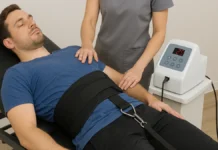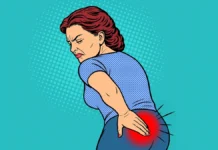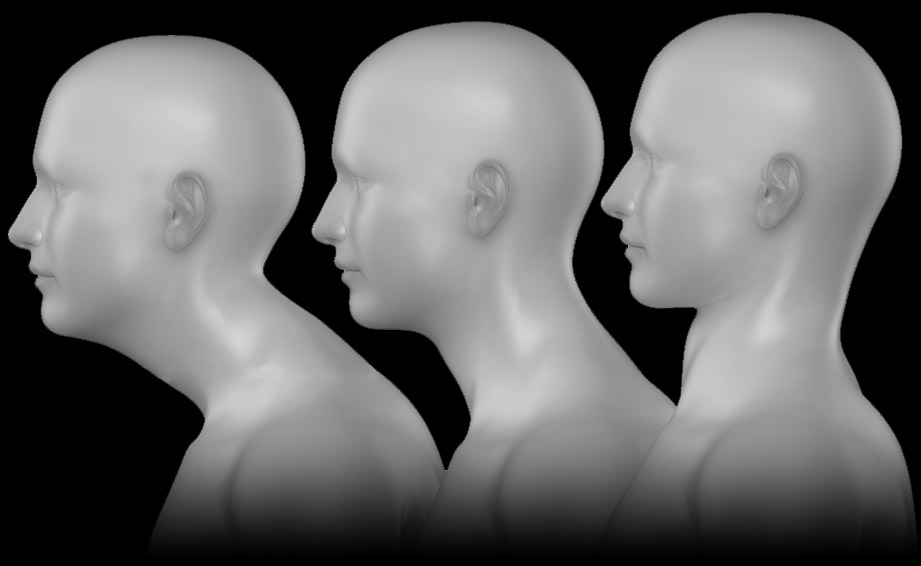Define transitional vertebra
A transitional vertebra is a unique anatomical structure found in the spine, specifically in the vertebral column. The vertebral column, or spine, is composed of individual vertebrae stacked on top of each other, forming the backbone. However, not all vertebrae are identical, and transitional vertebrae represent a variation in the typical vertebral anatomy.
In the human spine, there are three main regions: cervical (neck), thoracic (mid-back), and lumbar (lower back). The transitional vertebra occurs at the junction between these regions, where one type of vertebra transitions into another. The most common locations for transitional vertebrae are between the lumbar and sacral regions or between the thoracic and lumbar regions.
One well-known example of a transitional vertebra is the lumbosacral transitional vertebra (LSTV), which occurs at the junction of the lumbar and sacral spine. This anatomical variation can take different forms, and one of the most prevalent types is the Bertolotti’s syndrome. In Bertolotti’s syndrome, an enlarged transverse process of the last lumbar vertebra articulates with the sacrum or ilium, creating a pseudoarticulation. This condition is often associated with lower back pain and can impact the functionality of the spine.
The identification of transitional vertebrae is crucial in various medical fields, particularly in radiology and orthopedics. Radiologists use imaging techniques such as X-rays, CT scans, or MRIs to visualize the spine and identify any anomalies or variations in vertebral anatomy. Understanding the presence and characteristics of transitional vertebrae is essential for accurate diagnosis and treatment planning, especially in cases where these variations may contribute to spinal issues or lower back pain.
In addition to diagnostic considerations, transitional vertebrae may have implications in surgical and therapeutic interventions. Surgeons must be aware of the unique anatomy when planning spinal procedures, as the presence of transitional vertebrae can alter the surgical approach and technique. Furthermore, knowledge about transitional vertebrae is valuable in the context of degenerative spine conditions, congenital anomalies, and other spinal disorders.
Research in the field of orthopedics and spinal medicine continues to explore the prevalence, characteristics, and clinical significance of transitional vertebrae. This ongoing investigation helps healthcare professionals refine their understanding of spinal anatomy variations and enhance patient care by tailoring treatments to the specific anatomical features presented by each individual.
Here are some key points to consider regarding transitional vertebrae:
- Location: Transitional vertebrae are usually found at levels where regions of the spine change, such as between the lumbar spine and the sacral spine. They are often referred to by specific terms depending on their position, such as the lumbosacral vertebra or the sacrolumbar vertebra.
- Morphological Characteristics: Transitional vertebrae present intermediate morphological characteristics between normal vertebrae in adjacent regions. This may include such things as the shape of the vertebral body, the presence of additional articular processes, or changes in the transverse processes.
- Individual Variability: The presence of transitional vertebrae is subject to great individual variability. Not all individuals have these variations, and even when they are present, their shape and impact on the spine can differ from person to person.
- Clinical Consequences: In many cases, the presence of transitional vertebrae does not cause clinical symptoms. However, in some cases it can contribute to orthopedic or neurological problems, particularly if the anatomical variation disrupts the normal structure or function of the spine.
- Medical Imaging: Transitional vertebrae are often identified using medical imaging tests such as x-rays, CT (computed tomography) scans, or MRI (magnetic resonance imaging) scans. These images allow healthcare professionals to visualize the anatomical structures of the spine and identify any variations.
How a transitional vertebrae is formed ?
Transitional vertebrae exist due to the intricate and dynamic process of embryonic development and the evolution of vertebrates. The formation of transitional vertebrae is a result of variations in the segmentation of the vertebral column during embryogenesis, leading to different patterns of development.
During early embryonic development, the vertebral column forms from a series of somites – segmented blocks of tissue that give rise to various structures in the body, including the vertebrae. The somites differentiate into sclerotomes, which eventually form the bones of the vertebral column. As this process unfolds, genetic and environmental factors can influence the development of individual vertebrae, leading to variations in their structure and morphology.
Transitional vertebrae typically occur at the boundaries between major regions of the vertebral column, such as the junctions between the cervical (neck), thoracic (mid-back), lumbar (lower back), and sacral (pelvic) regions. The variations in the number, size, or shape of vertebrae at these transitional zones can result in the formation of a transitional vertebra.
Evolutionary factors also play a role in the presence of transitional vertebrae. Over the course of vertebrate evolution, different species have adapted to various environments and lifestyles. These adaptations may have influenced the development and structure of the vertebral column to optimize mobility, support, and function in specific contexts. Transitional vertebrae may represent evolutionary modifications that confer advantages in terms of biomechanics or other functional aspects.
In humans, one common type of transitional vertebra is the lumbosacral transitional vertebra (LSTV), occurring at the junction between the lumbar and sacral regions. The variations in the lumbar-sacral junction can manifest as enlarged transverse processes, pseudoarticulations, or other distinct features. The presence of transitional vertebrae can be influenced by genetic factors, and certain variations may be hereditary.
While transitional vertebrae are generally considered variations within the normal range of human anatomy, they can sometimes be associated with clinical issues. For example, the presence of certain types of transitional vertebrae, like those seen in Bertolotti’s syndrome, may contribute to lower back pain or affect the biomechanics of the spine.
Understanding the origins and significance of transitional vertebrae is essential for medical professionals, particularly in fields such as radiology, orthopedics, and anatomy. It helps clinicians accurately diagnose and treat spinal conditions, taking into account the unique anatomical variations that individuals may present.
Naming the transitional vertebrae
- Thoracolumbar vertebra (T12) : Located at the junction between the thoracic spine and the lumbar spine, the T12 vertebra has anatomical characteristics intermediate between the upper thoracic vertebrae and the lower lumbar vertebrae.
- Lower lumbar vertebra (L1) : Also located at the junction between the thoracic spine and the lumbar spine, the L1 vertebra marks the beginning of the lumbar region proper.
- Sacralization of (L5): Sacralization of L5 occurs when the last lumbar vertebra (L5), which is normally located in the lumbar region of the spine, exhibits characteristics more similar to a sacral vertebra. In this case, the L5 vertebra may show anatomical changes that make it more similar to the sacral vertebrae below it. This may include changes to the facet joints, overall shape of the vertebra, and other anatomical variations.
- Low Back (S1 ): Low back occurs when the first sacral vertebra (S1), which is normally located at the base of the spine, has characteristics more similar to a lumbar vertebra than to a typical sacral vertebra. In case of S1 lumbarization, the S1 sacral vertebra may present anatomical elements similar to those of the upper lumbar vertebrae. This may include different facet joints, a shape closer to those of the lumbar vertebrae, and other anatomical variations.
- Occipitalization of Atlas : The atlas, the first cervical vertebra (C1), is normally located just below the skull and forms a joint with the occipital bone at the base of the skull. In the case of atlas occipitalization, there is a partial or complete fusion between the atlas (C1) and the occipital bone. This fusion can lead to changes in the mobility and structure of the cervical spine. As with other anatomical variations, atlas occipitalization may be asymptomatic in some people, while others may experience symptoms such as headaches, neck pain, or other problems related to the region. cervical.
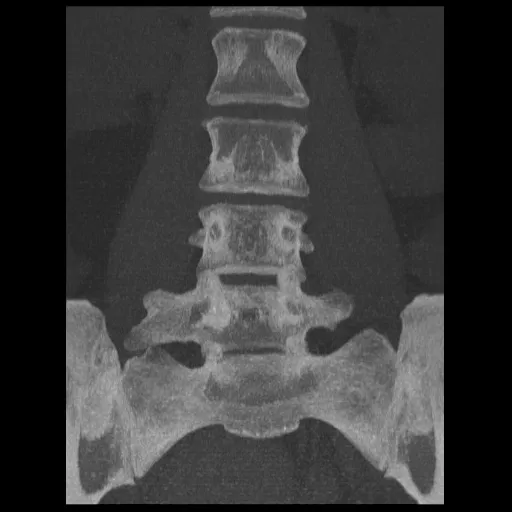
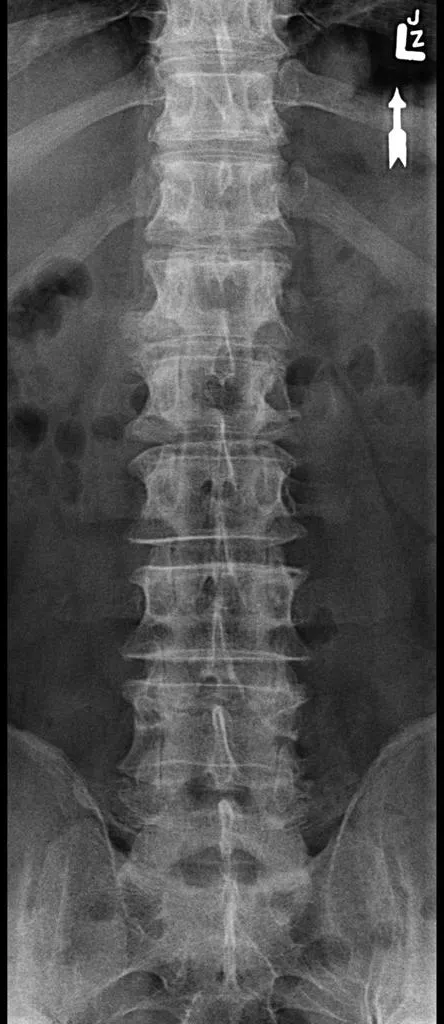
Role of Transitional Vertebrae in Lumbar Pathologies
Transitional vertebrae, such as the thoracolumbar vertebra (T12) and low lumbar vertebra (L1), can be associated with lower back problems, including disc herniation and spinal stenosis. Here is an analysis of this association:
- Increased Mobility : The transitional vertebrae, due to their position at the junction between the thoracic and lumbar spine, may exhibit increased mobility. This mobility can cause greater load on the lumbar structures, increasing the risk of trauma, disc degeneration and disc herniation.
- Biomechanical stress : Transitional vertebrae can create abnormal biomechanical stress on adjacent intervertebral discs. Increased pressure on these discs can promote degeneration, eventually leading to disc herniation where the gelatinous core of the disc can be compressed or herniated.
- Spinal Stenosis : Anatomical changes associated with the transitional vertebrae may contribute to spinal stenosis. S1 lumbarization or L5 sacralization can change the structure of the spinal canal, increasing the risk of narrowing the space around the spinal cord and nerve roots, which can lead to spinal stenosis.
- Instability : The presence of transitional vertebrae can contribute to spinal instability, increasing stress on surrounding structures. Instability can be a predisposing factor to herniated discs and other lower back problems.
- Congenital anomalies : Transitional vertebrae are sometimes associated with birth defects, such as variations in the shape of the vertebrae or abnormal joints. These abnormalities can increase susceptibility to lumbar pathologies.
- Genetic factors : Some people may have a genetic predisposition to develop anatomical variations, including transitional vertebrae. Genetic factors can also influence susceptibility to lumbar pathologies.
Evolutionary Perspectives of Transitional Vertebrae in Humans
Transitional vertebrae in humans, such as the thoracolumbar vertebra (T12) and low lumbar vertebra (L1), can be analyzed from the perspective of human evolution. It is important to note that evolution is a complex process influenced by many factors, and the study of transitional vertebrae can provide insights into how the human spine adapts over time. Here are some possible evolutionary perspectives:
- Locomotor adaptations : Over the course of evolution, changes in lifestyle, bipedalism, and upright posture have placed selective pressures on the spine. Transitional vertebrae can be seen as adaptations to these changes, providing a structural transition between the thoracic and lumbar regions to support upright posture.
- Anatomical complexity : Transitional vertebrae may also reflect the increasing anatomical complexity of the human spine through evolution. Anatomical variations, including transitional vertebrae, can result from evolutionary processes such as natural selection, genetic drift, and environmental pressures.
- Genetic Variability : Transitional vertebrae are often associated with genetic variations. Studying these variations can offer insights into genetic diversity within human populations, showing how genetics may play a role in the evolution of spinal morphology.
- Functional consequences : The presence of transitional vertebrae can have functional consequences on the mobility and stability of the spine. These functional adaptations may be the result of evolutionary trade-offs related to the need to maintain balance and bipedal locomotion.
- Evolution of biomechanical constraints : The evolution of biomechanical constraints exerted on the spine can also influence the development of transitional vertebrae. Changes in the environment, diet, travel patterns, and other aspects of human lifestyle can contribute to these adaptations.
- Interpopulation variations : Variations in the frequency of transitional vertebrae have been observed between different human populations. This diversity may reflect specific adaptations to particular environments or local evolutionary pressures.
Transitional Vertebrae and Physical Activity
The presence of transitional vertebrae can influence the practice of physical and sporting activities in several ways, due to the specific mobility and structure of these vertebrae. Here are some considerations and recommendations for those affected:
- Flexibility and Mobility : Transitional vertebrae may be associated with increased mobility in the lumbar region. This can be beneficial in activities that require flexibility, such as yoga, gymnastics, or dancing. However, it is essential to approach these activities with caution to avoid overmobility which could increase the risk of injury.
- Muscle Strengthening : Exercises to strengthen the core muscles, especially those that support the lumbar region, can be important for stabilizing the spine in people with transitional vertebrae. This includes exercises like planks, core exercises, and strength exercises targeting the lower back and abdominal muscles.
- Injury Prevention : Individuals with transitional vertebrae should be attentive to injury prevention, particularly when participating in strenuous physical activities. Warming up properly, wearing protective gear if necessary, and listening to your body are all essential to avoiding injury.
- Regular Medical Monitoring : It is recommended that people with transitional vertebrae receive regular medical monitoring, particularly if they are engaged in strenuous physical activities. Healthcare professionals can monitor potential symptoms, assess spinal stability, and recommend activity adjustments if necessary.
- Adaptation of Activities : Certain high-impact physical activities, such as running or jumping, can put excessive strain on the spine. People with transitional vertebrae may consider low-impact activities, such as swimming or cycling, to reduce stress on the spine while maintaining a beneficial level of physical activity.
- Personalized Advice : Specific recommendations may vary depending on the severity of the transitional vertebrae, individual symptoms and level of physical activity. It is therefore recommended to consult a healthcare professional, such as an orthopedist or physiotherapist, for personalized advice based on a thorough assessment.





